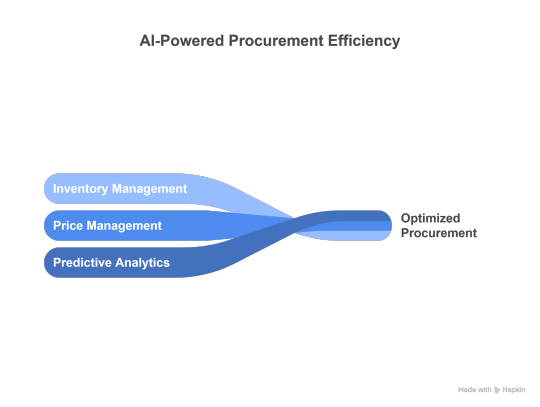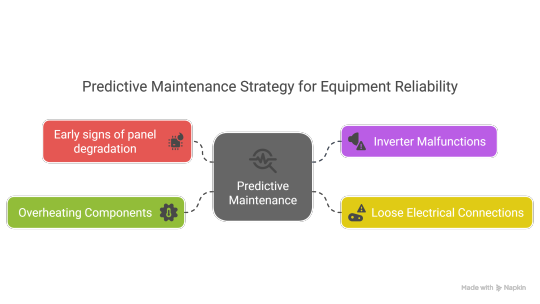#irradiance sensors
Explore tagged Tumblr posts
Text
Maximizing Solar Potential: Exploring Irradiance Sensors in India
India, with its abundant sunlight, stands at the forefront of solar energy potential. Harnessing this renewable resource efficiently is key to the nation's sustainable energy future. One crucial technology aiding this endeavor is the irradiance sensor, particularly the pyranometer, which plays a vital role in optimizing solar power systems. In this blog, we delve into the significance of irradiance sensors in India, their applications, and their impact on maximizing solar potential.
Understanding Irradiance Sensors
Irradiance sensors, also known as irradiation sensors, measure the power of solar radiation received per unit area. These devices are essential for accurately assessing the amount of solar energy available at a given location, which is crucial for the design, monitoring, and optimization of solar power systems. The most commonly used type of irradiance sensor in the solar industry is the pyranometer.
The Role of Pyranometers
A pyranometer is a type of irradiance sensor specifically designed to measure global solar radiation. It provides precise data on the total amount of sunlight, both direct and diffuse, reaching a horizontal surface. This information is critical for various applications:
Solar Power Plant Monitoring: Pyranometers help in monitoring the performance of solar power plants by providing real-time data on solar radiation. This data helps in identifying deviations from expected performance, thereby enabling timely maintenance and optimization.
Solar Resource Assessment: Before setting up a solar power plant, it is essential to assess the solar resource availability at the proposed site. Pyranometers provide accurate measurements of solar irradiance, aiding in site selection and system design.
Performance Ratio Calculation: The performance ratio of a solar power plant is a key indicator of its efficiency. Pyranometers help in calculating this ratio by comparing the actual energy output with the theoretical potential based on the measured irradiance.
Importance of Irradiance Sensors in India
India's geographic location makes it an ideal candidate for solar energy exploitation. However, the variability in solar radiation across different regions necessitates the use of irradiance sensors for precise measurement and effective utilization of this resource. Here are some reasons why irradiance sensors are crucial in India:
Diverse Climate Conditions: India experiences a wide range of climatic conditions, from the arid deserts of Rajasthan to the tropical regions of the south. Irradiance sensors help in understanding the solar radiation patterns in these diverse conditions, allowing for tailored solar solutions.
Optimal System Design: Accurate irradiance data ensures that solar power systems are designed to maximize energy capture and efficiency. This is particularly important in India, where maximizing the return on investment for solar installations is crucial for widespread adoption.
Grid Integration: For effective integration of solar power into the national grid, understanding the variability and predictability of solar radiation is essential. Irradiance sensors provide the necessary data to manage grid stability and ensure a reliable power supply.

Current Use and Future Prospects in India
In India, irradiance sensors are increasingly being adopted in both large-scale solar farms and smaller rooftop installations. The Ministry of New and Renewable Energy (MNRE) and various state governments are encouraging the use of advanced monitoring systems, including pyranometers, to enhance the performance and reliability of solar projects.
Furthermore, with the government’s ambitious target of achieving 175 GW of renewable energy capacity by 2022, including 100 GW from solar power, the role of irradiance sensors becomes even more critical. The data provided by these sensors will be instrumental in achieving this target by ensuring that solar power systems are performing at their optimal levels.
Challenges and Solutions
Despite the clear benefits, the deployment of irradiance sensors in India faces certain challenges:
Cost: High-quality pyranometers and other irradiance sensors can be expensive, which may deter small-scale installations from adopting them. However, as technology advances and economies of scale come into play, costs are expected to decrease.
Maintenance: Regular maintenance and calibration of irradiance sensors are crucial for accurate measurements. Developing a robust maintenance framework and training personnel can address this issue.
Awareness and Training: There is a need for greater awareness and technical training among stakeholders about the benefits and operation of irradiance sensors. Government and industry initiatives can help bridge this gap.
Conclusion
The use of irradiance sensors, particularly pyranometers, is pivotal in maximizing the solar potential in India. By providing accurate and real-time data on solar radiation, these sensors enable efficient design, monitoring, and optimization of solar power systems. As India continues its journey towards a sustainable energy future, the integration of advanced irradiance sensors will play a crucial role in harnessing the full potential of solar energy. In conclusion, the adoption of irradiance sensors in India is not just a technical enhancement; it is a strategic move towards a greener and more sustainable future.
Source: https://houstonstevenson.com/2024/06/03/maximizing-solar-potential-exploring-irradiance-sensors-in-india/
0 notes
Text
With the help of some lovely messages and AI here is a story.

Beneath the lowest sub-level of Fort Resolute’s bio-sealed annex, six men of CBRN Task Force Theta—Hauptmann Friedrich Adler, Oberfeldwebel Lukas Krüger, Stabsunteroffizier Wilhelm Stein, Unteroffizier Markus Vogel, Gefreiter Erik Weiß, and Gefreiter Johann Köhler—sat in regulation combats, boots planted on the metallic floor, awaiting the irreversible. Each had been hand-picked: Adler, the only commander in Europe to log three consecutive zero-casualty extractions from nerve-agent zones; Krüger, a demolitions savant whose calm pulse under fire never rose above fifty; Stein, an endurance record-holder able to remain conscious through fifteen minutes of hypoxic gas testing; Vogel, a virological prodigy with natural resistance markers to mutagenic particulates; Weiß, a former Olympic triathlete whose cardiovascular efficiency bordered on superhuman; and Köhler, confirmed by military psychiatrists as possessing the rarest trait of all—complete affective detachment in the face of mass casualties. Doctor Karczek, architect of the Permanent Protective Integument Programme, activated holoscreens that unfurled a vivid breakdown of the six-phase metamorphosis awaiting them. Phase One: Exfoliative Etch—their outer epidermis would be misted away by enzymatic solvent as pink rivulets dripped into drains, an agonising itch muted only by intravenous analgesia. Phase Two: Polymer Suspension Bath—each man would float in black, mercury-like fluid while nanoscale carriers welded synthetic latticework to raw dermis, sliding between toes, beneath nails, even along gumlines, twitching muscles like marionettes. Phase Three: Fusion Cure—immobilised in induction sarcophagi, electromagnetic pulses would shrink-wrap the polymer deeper, flash-hardening every molecule; Karczek likened it to the T-1000 poured over living flesh. Phase Four: Respirator Integration—a seamless mask, sculpted from sister polymer, would be pressed to their bared facial bones, microspikes rooting into maxilla and mandible in under thirty seconds; speech would emerge through a sub-glottal vocoder, accents flattened into submarine basso. Phase Five: Sensory Calibration—the sealed figures would be bathed in chlorine vapour, VX simulant, and neutron-irradiated dust, sensors confirming zero uptake while phantom itches flared across fingertips soon to be fingerprint-less. Phase Six: Psychological Lock-In—EEG-guided neurofeedback would teach their brains that the suit was self, every recollection of old flesh punished by cascading migraines, cementing loyalty to the integument for life. Krüger asked the final question: what becomes of them when wars end? Karczek answered with clinical certainty: they would return, but so would the suit; children might hold their hands yet feel only polymer, their eyes forever staring through respirator lenses. Tablets slid across the desk, black screens awaiting fingerprints soon to dissolve; one by one the men pressed, committing skin, name, and future. Cradle doors hissed, releasing a metallic scent like rain on scorched iron. Boots struck concrete in perfect cadence as six elite soldiers marched towards dissolution and rebirth, destined never again to wear protection but to become it—living weapons forged from fear and rubber, able to tread where no unsealed man could follow.
3 notes
·
View notes
Text
He's right. It is a UFO.
It was me.
I was out and about last Friday night, coming in over Montana to land my starship at my bunker. Unfortunately, the remote for my garage door opener ran out of juice. I know, right? The fuck am I using that when I have a starship with a communications array? Easy answer: I don't want to light up a communications array with the power to cross interplanetary space in the backyard of the United States.



I really wanted to take my starship out for a spin and had taken my shuttle out to it from Illinois. Montana isn't that far and it's big, empty, and full of trees for good hiding places. I took a quick run for a week out past Neptune. Why, might you ask?
For only the most awesome and purest of teas, juices, snow cones, and slushies you could ever make from fresh Oort Cloud ice!





It's an indulgence. The trick is to get one that isn't too chemically blended. One that is pure water ice. They're easy to find with sensors, but you also have to have the right tools to get at the good stuff under the surface. Then you avoid the irradiated bits.
Four billion year old ice to make snow cones, slushies, ice cream, juices, teas, AND COFFEES! It's tasting creation. I mean, it's just water, but it's just sooooooooo fucking pure. Just the right amount of metals and little to no minerals. Clear and delicious.
But I digress... as usual.
So I came in, got sidetracked trying to put a button cell into the remote, and realized I had ticked the autopilot into hover without noticing I was still over a small town. The red swirly light comes on when a starship hovers, it's the law. It's like parking lights or hazard flashers on your car. It helps prevent mid-air collisions.
By the time I got the cell in, I realized my error and quickly got into the garage. I landed, slept for a bit and woke up the next morning to streak back home in my shuttle. Next thing I know, this guy has posted a viral video of my ship.
I downloaded a copy for myself from the dude's Google Drive and uploaded it here as proof. Of course, the gif below is from a TV show, but it's a close enough approximation.
My ship is so pretty.


Here's another one from Mexico:
youtube
#just azure things#just azzy things#wicked bitch of the midwest#what the hell is wrong with you#you got some wicked tastes girl#dankmark#dank#youtube#shit azzy says#shit azure says#extraterrestrial#xenomorph#alien species#aliens are real#aliens and ufos#aliens and humans#aliens are weird#aliens among us#we're already here#Youtube
3 notes
·
View notes
Text
A Brief Explanation of Super Mutants, The Master and Harold for the Unititaed
In 2163, the super mutants tried to take over over - and they almost won. Decades prior, a man named Harold and Richard Grey were exploring the Mariposa military base (A west-tek facility where the Brotherhood of Steel was founded after learning about unethical experiments, though since abandoned) about 50 years after the bombs dropped looking to deal with some random murants. Harold was exposed to the Forced Evolutionary Virus (FEV) through a splash but Richard Grey was knocked unconscious and fell into a vat. When he emerged he was a shambling, ever expanding mess of organic material that spread throughout the base.

He repeatedly reintroduced FEV to his body in order to “grow” it, including incorporating most of the bases automated systems and computer control into his own body. He eventually got to the point where he could communicate via radio waves into the minds of anyone close enough to either himself or one of his sensors
He believed that Humanity was fundamentally doomed and that, after a few years of experimenting, his perfected “Super Mutants” would reclaim the wasteland all under his control. Not wars, no conflict, only the Unity under the Master. The Master, as Richard now went by, began a mass campaign of kidnapping and infecting un irradiated people (as they had the best chance of gaining psychological/intellectual positives in addition to being super big and strong), before threatening the Village of Shady Sands and Vault 13 - the home vault of the very first Main Character in the fallout series. Since the Vault was filled with unirradiated people, the Vault Dweller, who has repeated contact with Super Mutants during their quest to find a Water Chip, was forced to take down the Master in order to save their home by the corrupt overseer Jacoren. Through an alliance of the Brotherhood of Steel, a humanitarian organization called the Followers of the Apocalypse, and a bunch of villages in the proto-New California Republic were able to band together and attack the Master’s two forts
while the games dont say officially what happened either way, the story hints in fallout 2 that the Master committed suicide. After revealing that Super Mutants are infertile and instead of being a continuation of a New Species, they would actually just lead to the slow and inevitable end of all intelligent life as they died off without replacement. So, the Master after realizing his goal to save humanity and the world instead caused suffering en mass, explodes himself and the Cathedral - his new base of Operations
Ironically, Harold sticks around all the up up until Fallout 3, a full hundred and thiry years later. He followed the Brotherhood out east leading a merchant caravan before Bob, a tree that was growing out of his head, eventually started going haywire. After making it to DC, the FEV and Bob finally overwhelmed Harold, turning him into a stationary Tree God, able to sense and communicate through all organic life that Bob’s spores interact with. With project purity cleaning the potomac, theres a very real chance that Harold and Bob might bring about that renewal and regrowth that his old friend Richard always dreamed of

he’s similarly inhuman - his organs are seperated by several meters and are all connected through a root system and, facilitating them swelling to tremendous size. But Old Harold is always content to listen to and talk to travelers that come to his Oasis. He was a close friend the protagonist of Fallouts 1 and 2 before appearing in 3, and was involved with pretty much every major event in California prior to 2255 when he went to DC
#fallout#fallout 2#fallout 3#Harold Fallout#Richard Grey#The Master Fallout#super mutant#Super Mutant Master#vault dweller
17 notes
·
View notes
Text

Caliglo, the Warning Pokemon Following the train derailment outside Bascule City, a great deal of hazardous material was left in the area. We have confirmed this is the cause of the recent outbreaks of caustic rain in the area, but this detail is not to be released to the public. The toxic air around the breached and spread materials has made cleanup difficult. One good thing has come of the disaster, however. A population of feral Calicozy had lived in the impact zone, and has adapted to the hostile environment rather than expire. Legal and Marketing are currently trying to figure out ways we can copyright these without raising the ire of the entire region. The Pokemon, currently codenamed "Caliglo" exhibits behavior far different from the other polluted specimens, in particular it is able to breed and evolve without extreme methods. Caliglo appears to be a natural evolution of Caliglo in the face of a new environment, such as the changes in Manakan Sneasel, or the evolution of Eevee around the mythical "Moss Rock." Caliglo are extremely tough, and completely immune to the toxic environment in the crash area. Even in areas of low contamination, the green patches on Caliglo's coat glow, alerting everyone to the nearby danger. This glow intensifies with contamination level, letting them be used as living sensors to help teams get deeper into the area with relative safety. The green color is muted outside the contaminated area, allowing the Pokemon to exist in most public spaces under the guise of being a particularly chubby Calicozy. Because of this, we have been planting Caliglo in important positions to be on the lookout for the contamination.
Types: Poison/Dark Ability: Geiger Counter — As Pokemon take damage from poison, Caliglo increases its most proficient stats in sequence. Toxic poison raises by two stages instead. [Best stat the first tick, second best the second tick, start at the best stat again on the sixth tick] Hidden Ability: Corrosion Evolution: Calicozy evolves into Caliglo when it levels up in an irradiated area. Gender Split: 75% Female, 25% Male Egg Group: Field; Unlike Calicozy, male Caliglo can breed.
No one at Glo-Co is watching on account of the holidays, go, quick, spread the word while we can! I'm going to try to get more documents before they realize what's going on.

#doodle#by-cajun#poke-midwest#glo-co#fakemon#dex-entry#shiny#signature-ability#caliglo#calicozy-line#two-stage
5 notes
·
View notes
Text

Hardy transistor material could be game-changer for nuclear reactor safety monitoring
The safety and efficiency of a large, complex nuclear reactor can be enhanced by hardware as simple as a tiny sensor that monitors a cooling system. That's why researchers at the Department of Energy's Oak Ridge National Laboratory are working to make those basic sensors more accurate by pairing them with electronics that can withstand the intense radiation inside a reactor. The ORNL research team recently met with unexpectedly high success using a gallium nitride semiconductor for sensor electronics. A transistor made with the material maintained operations near the core of a nuclear reactor operated by research partner The Ohio State University. Gallium nitride, a wide-bandgap semiconductor, had previously been tested against the ionizing radiation encountered when rockets hurtle through space. Devices with wide-bandgap semiconductors can operate at much higher frequencies, temperatures and irradiation rates. But gallium nitride had not faced the even more intense radiation of neutron bombardment.
Read more.
#Materials Science#Science#Transistors#Nuclear power#Sensors#Electronics#Radiation#Gallium nitride#Semiconductors#Gallium#Nitrides
13 notes
·
View notes
Text
Standing in front of the hangar bay, watching the stars from beyond the thin membrane separating me from the vacuum that manages to allow only vehicles through.
I stare again into the abyss, stars twinkling- years passing in microseconds. The planet we orbit, more an oversized asteroid than any real celestial body glows with terraforming towers and colonies.
The sun blares her light, overshadowing everything and willing to blind and cook and irradiate anything unprotected. Luckily, the hangar's docking membrane was also designed to handle her divine power.
Ships fly past, sometimes drifting right by me as they dock, other times 'mech pilots take their incredible mights of engineering and leap out into the abyss. Jets and the gravity of the asteroid guide their landing. Always, their handlers curses can be heard throughout the station for this unsanctioned move, but no consequences ever befall the pilots that come back.
I finally move, pressing a mechanical hand to the bubble-like layer between myself and the cold abyss. It's warm. Nerve-like sensors within my prosthetic convey a static feeling as the station itself attempts to hold me back as the sun.
I close my eyes and ponder, if the station ever blinked, if it ever wavered while I were against the bulwark. Would she let me go? I imagine my body phasing through that membrane, floating off into the cold nothingness. Suffocating. Freezing. Burning. Would the crew notice? Could I be saved?
My hand leaves the membrane.
For a moment, I consider trying to leap out the station, but turn back to the innards of the station. I stared into the abyss, and saw her call to me, singing inaudibly her siren song, and I refused.
Some rest will do me good, I think, and so I head to my quarters. I shall return to greet her again tomorrow.
8 notes
·
View notes
Text
Medusa-Class Battleship

Creator: Thai'Qul Length: 798 Meters Width: 378 Meters (Widest Point); 70 meters (Narrowest Point) Propulsion: Nuclear Pulse Drive; Five Fusion Drive Thrusters Crew Complement: 5,000-7,000 (Normal complement); 10,000 (Max. Capacity) Radiator Type: Solid-State/Droplet Armaments:
x8 40mm Point Defense Cannons (PDCs) (Aft)
x4 Cargo/Torpedo Bays (Aft)
x2000 5-kiloton driver warheads (Aft)
x4 Ultra-Relativistic Electron Beam (UREB) Cannons (Bow)
Interior
Because the Thai'Qul are an aquatic species, their ships are unique in being almost entirely filled with water. This pulls triple duty in protecting the occupants from intense G-forces, radiation and heat; providing resources for the fusion reactor and torpedoes, and in the event of a hull breach, lost water can be more easily retrieved than air. The consequence of this is that it increases the ship's overall mass, requiring more energy for any kind of acceleration or deceleration. This is also another reason for their ruthless pragmatism: the lack of air pockets outside the cargo sections prevents them from easily taking prisoners or taking larger ships aboard.
Creators
An average Thai'Qul male. Roughly 85% of the species is male, carrying out tasks for the rarely-seen matriarchs, who outsize them significantly. On ships such as the Medusa-class, prepubescent matriarchs- referred to colloquially as "Countesses"- serve the role of captains and admirals.
Strategic Overview
If there's any way to describe the Thai'Qul military doctrine, it would be ruthless pragmatism. Rather than engaging in widespread power projection, heavier ships are mostly concentrated within their own systems, while smaller vessels are the most commonly encountered. These represent the first line of defense, focused on patrolling defense perimeters.
Should a perimeter be broken and an enemy force infiltrate a Thai'Qul system, either by evading or destroying lighter vessels, this is when battleships such as the Medusa-class are deployed. This typically follows barrages of Thai'Qul frigates and corvettes, which will try to guide invaders into designated kill zones, where the Medusa-class will engage them at close range, such as near large asteroids, space stations or ring systems.
While these battleships lack high speed or fine maneuvering, they make up for it with powerful defenses and overwhelming firepower, particularly their UREBs. Once the invader's shields and other defenses have been exhausted, should they refuse to surrender, attacks from these beams will irradiate and effectively sterilize the target.
This is done because, rather than simply blowing up bellicose ships, the Thai'Qul will always try to salvage as much technology and information from them as possible, either to assess motivations or reverse-engineer whatever they discover. Of course, should a ship surrender instead, the Thai'Qul will gladly accept, taking the time to analyze captured ships just as thoroughly.
This doctrine has proven to be quite effective in multiple engagements and ensured invasions of their systems are rare.
Ship Diagram
The Bow Shield is a large dome entirely covered in ablative heat-resistant armor.
The nose of the craft houses the four UREB cannons, which cover a large hemispherical field. While the beams lose effectiveness over time or when fired at an angle, time dilation effects prevent them from completely dissipating over longer ranges. Maximum energy from the bremsstrahlung resulting from impact has been measured at over 5,000 Sieverts.
The UREBs are only possible via the battleship's length, where the linear accelerator (Linac) runs along the central axis of the ship.
The Medusa-Class doesn't have a designated bridge or command module, but instead 36 large windowless spheres, where most of the crew resides. Commands, controls and sensor readings are instead performed using holographic display interfaces that crew members can pull up at any moment. This ensures damage to one area of the ship will not compromise control, and that key staff can be moved into the interior.
The ship uses a combination of solid-state and droplet cooling with liquid lithium, firing the molten coolant into space, where it condenses into larger drops before being recaptured in a dish section for recirculation. Additional radiators vent excess heat to prevent the lithium from completely vaporizing. In times of duress, this coolant can be used as everything from makeshift flares to additional thrusters.
The aft section consists of a large octagonal cylinder, which houses bay sections designed to be drained of water so cargo, torpedoes and other craft can be sent into space. This is also where the ship's fusion reactor is housed.
The PDCs, nicknamed "Barnacles," allow the ship to fire at targets behind or beside the ship.
Contrary to popular belief, the piston supports are only painted blue and not transparent, though they are full of water to help cushion the impact following a pulse.
The pistons and their shock absorbers are attached to a set of electric motors, which extract a small, but not insubstantial amount of power from every pulse.
The Drive Cone is fitted with flexible rings and is even colored bright white to take advantage of as much radiation pressure as possible. Usage of this drive is why the battleship can't be used in a planetary orbit, as the risk of creating radiation belts poses a threat to orbital infrastructure.
#the-helixverse#ekpyrosis#thai'qul#spaceship#worldbuilding#my art#hard science fiction#hard sci fi#ship design#project orion#worldbuilding art#scifi art
34 notes
·
View notes
Text
Napoleon's Marshals and their Birthstones FINAL part
This is the third and final part of the birthstone saga where I'll cover the remaining four birthstones and their marshals (plus two other non-marshals but I wanted to include anyway). I can't believe I spent half of my winter break researching shiny rocks XD
Part 1 and Part 2 are avaliable here
--------------------------------------------------------------
*Mineraloid: A mineral-like object that does NOT contain a crystalline structure.
--------------------------------------------------------------
Sapphire (September)
Marshals- N/A (Honorable mentions: Eugène de Beauharnais & Jean-Andoche Junot)
Type: Mineral
Group: Oxide (Al₂O₃)
Color: Blue, yellow, green, purple
Cleavage: Poor
Fracture: Conchoidal to splintery
Mohs Scale: 9
Luster: Vitreous
Streak: Colorless
Fun Facts: Sapphire is a variety of the mineral corundum and usually comes in the color blue, but it can also come in colors such as yellow, green, and even purple. Its blue hue is due to traces of iron and titanium in its crystal structure. Sapphires, along with the other cardinal gemstones, have a rich history and cultural significance. In ancient Persia and Greece, it was believed that sapphires possessed divine powers and were used in crowns and jewelry of kings and queens. In today’s age, sapphires are used in different objects such as luxury watches, LED lights, and infrared sensor windows used in military aircraft because of their durability (having a hardness of 9, making it the second hardest mineral other than a diamond) and a high melting point of about 3704°F or 2040 °C.
Opal (October)
Marshals- Augereau, Lefebvre, and Grouchy
Type: Mineraloid*
Group: (Hydrated) Silica (SiO₂·nH₂O)
Color: Colorless, white, yellow, blue, green, black, brow, pink
Cleavage: None
Fracture: Conchoidal to uneven
Mohs Scale: 5.5-6
Luster: Waxy
Streak: White
Fun Fact: Opals are formed when water carries pieces of silica inside an open rock or sediment, often found near volcanoes or groundwater. As time passes, the water inside the rock will evaporate, leaving the silica to solidify inside the host rock, which, under specific temperatures and pressure, will begin to form the opal. There are four types of opals: precious, common, matrix, and synthetic opals. Precious opals exhibit what is known as “opalescence,” which happens due to the arrangement of silica inside the opal, creating an array of colorful hues when put under light. Common opals do not possess opalescence; they are either opaque or translucent with one main color present. Matrix opals are opals embedded in their host rock during their formation, and synthetic opals are lab-grown opals that imitate the colorful look of natural opals.
Topaz (November)
Marshals- Berthier and Macdonald
Type: Mineral
Group: Silicate (Al₂SiO₄(F,OH)₂)
Color: Colorless, blue, brown, yellow if impurities are present
Cleavage: Basal (perfect)
Fracture: Subconchoidal to uneven
Mohs Scale: 8
Luster: Vitreous or adamantine
Streak: White
Fun Fact: Topaz gets its name from the Greek word topazion, which refers to the Zabargad Island near the Red Sea, where peridot is also found. Topaz comes in different colors, but the most popular color is blue, the most common color found in jewelry stores [1]. Natural blue topaz is very rare, so to get the color blue, a colorless or pale yellow topaz is heated or irradiated using gamma radiation. Subatomic particles are shot through the topaz at high speeds, which knocks some of the electrons out of orbit, causing the light that travels through the crystal to change and the amount of light absorbed. Due to the color wavelength changing, the human eye perceived the topaz as blue [2].
Turquoise (December)
Marshals- Perrin and Sérurier
Type: Mineral
Group: Phospate (CuAl₆(PO₄)₄(OH)₈·4H₂O)
Color: Turquoise, blue, blue-green
Cleavage: Perfect but rarely seen
Fracture: Conchoidal
Mohs Scale: 5-6
Luster: Waxy or dull
Streak: Blue or white
Fun Fact: Turquoise is another mineral that contains water in its structure; this comes in the form of a hydrated phosphate of either copper or aluminum. Turquoise was one of the first gemstones to be mined, with some jewelry dating back to around 5000 BCE. Even though it has been used in jewelry for thousands of years, its value has decreased due to the treatments and synthetic turquoise appearing more often in the market. Even though they are minerals, well-formed crystals are rarely found on their own, with most turquoise growing closely packed around another mineral, causing it to have a higher durability [3]. Due to its lower hardness level, caring for any turquoise jewelry is important, and it is recommended not to use it while doing any sort of manual labor as the gemstone can be easily damaged. Jewelry designers place a durable bezel around the gem to prevent scratches and protect it. However, the bezel can only protect the gemstone to a limited degree since it is still exposed to open air. It is also recommended not to get the gemstone wet as it can absorb liquids due to its low porosity, which can alter its color [4].
--------------------------------------------------------------
Sources:
Sapphire: MAT, M. (2023, April 24). Sapphire: Properties, formation, occurrence " Geology science. Geology Science. https://geologyscience.com/gemstone/sapphire/?amp
Opal: MAT, M. (2023, September 29). Opal : Properties, formation, uses and deposits " geology science. Geology Science. https://geologyscience.com/gemstone/opal/?amp
Topaz: [1] King, H. M. (n.d.). Blue topaz. Geology. https://geology.com/gemstones/blue-topaz/#treatment
[2] MAT, M. (2023, August 26). Topaz : Gemstone: Properties, formation, occurrence, uses. Geology Science. https://geologyscience.com/minerals/topaz/?amp
Turquoise: [3] MAT, M. (2023, April 23). Turquoise: Mineral properties, uses and occurrence. Geology Science. https://geologyscience.com/gemstone/turquoise/?amp
[4] King, H. M. (n.d.-b). Turquoise. geology. https://geology.com/minerals/turquoise.shtml
#aye Eugene finally makes an appearance on one of my posts :D#napoleonic era#napoleon bonaparte#french history#napoleonic wars#napoleon's marshals#gemstone#birthstone#rocks and minerals#jean andoche junot#eugène de beauharnais
15 notes
·
View notes
Text
We offer the best irradiance sensor pyranometer price in India for efficient solar monitoring. Optimize your solar system with our top-quality irradiance sensors. Contact us today!

0 notes
Text
NASA Tech to Use Moonlight to Enhance Measurements from Space - NASA
New Post has been published on https://sunalei.org/news/nasa-tech-to-use-moonlight-to-enhance-measurements-from-space-nasa/
NASA Tech to Use Moonlight to Enhance Measurements from Space - NASA

NASA will soon launch a one-of-a-kind instrument, called Arcstone, to improve the quality of data from Earth-viewing sensors in orbit. In this technology demonstration, the mission will measure sunlight reflected from the Moon— a technique called lunar calibration. Such measurements of lunar spectral reflectance can ultimately be used to set a high-accuracy, universal standard for use across the international scientific community and commercial space industry.
To ensure satellite and airborne sensors are working properly, researchers calibrate them by comparing the sensor measurements against a known standard measurement. Arcstone will be the first mission exclusively dedicated to measuring lunar reflectance from space as a way to calibrate and improve science data collected by Earth-viewing, in-orbit instruments.
“One of the most challenging tasks in remote sensing from space is achieving required instrument calibration accuracy on-orbit,” said Constantine Lukashin, principal investigator for the Arcstone mission and physical scientist at NASA’s Langley Research Center in Hampton, Virginia. “The Moon is an excellent and available calibration source beyond Earth’s atmosphere. The light reflected off the Moon is extremely stable and measurable at a very high level of detail. Arcstone’s goal is to improve the accuracy of lunar calibration to increase the quality of spaceborne remote sensing data products for generations to come.”
Across its planned six-month mission, Arcstone will use a spectrometer — a scientific instrument that measures and analyzes light by separating it into its constituent wavelengths, or spectrum — to measure lunar spectral reflectance. Expected to launch in late June as a rideshare on a small CubeSat, Arcstone will begin collecting data, a milestone called first light, approximately three weeks after reaching orbit.
“The mission demonstrates a new, more cost-efficient instrument design, hardware performance, operations, and data processing to achieve high-accuracy reference measurements of lunar spectral reflectance,” said Lukashin.
Measurements of lunar reflectance taken from Earth’s surface can be affected by interference from the atmosphere, which can complicate calibration efforts. Researchers already use the Sun and Moon to calibrate spaceborne instruments, but not at a level of precision and agreement that could come from having a universal standard.
Lukashin and colleagues want to increase calibration accuracy by getting above the atmosphere to measure reflected solar wavelengths in a way that provides a stable and universal calibration source. Another recent NASA mission, called the Airborne Lunar Spectral Irradiance mission also used sensors mounted on high-altitude aircraft to improve lunar irradiance measurements from planes.
There is not an internationally accepted standard (SI-traceable) calibration for lunar reflectance from space across the scientific community or the commercial space industry.
“Dedicated radiometric characterization measurements of the Moon have never been acquired from a space-based platform,” said Thomas Stone, co-investigator for Arcstone and scientist at the U.S. Geological Survey (USGS). “A high-accuracy, SI-traceable lunar calibration system enables several important capabilities for space-based Earth observing missions such as calibrating datasets against a common reference – the Moon, calibrating sensors on-orbit, and the ability to bridge gaps in past datasets.”
If the initial Arcstone technology demonstration is successful, a longer Arcstone mission could allow scientists to make the Moon the preferred reference standard for many other satellites. The new calibration standard could also be applied retroactively to previous Earth data records to improve their accuracy or fill in data gaps for data fields. It could also improve high-precision sensor performance on-orbit, which is critical for calibrating instruments that may be sensitive to degradation or hardware breakdown over time in space.
“Earth observations from space play a critical role in monitoring the environmental health of our planet,” said Stone. “Lunar calibration is a robust and cost-effective way to achieve high accuracy and inter-consistency of Earth observation datasets, enabling more accurate assessments of Earth’s current state and more reliable predictions of future trends.”
The Arcstone technology demonstration project is funded by NASA’s Earth Science Technology Office’s In-space Validation of Earth Science Technologies. Arcstone is led by NASA’s Langley Research Center in partnership with Colorado University Boulder’s Laboratory for Atmospheric and Space Physics, USGS, NASA Goddard Space Flight Center in Greenbelt, Maryland, Resonon Inc., Blue Canyon Technologies, and Quartus Engineering.
For more information on NASA’s Arcstone mission visit:
https://science.larc.nasa.gov/arcstone/about/
0 notes
Text
HVAC Innovations in 2025 – What Clients in Gurgaon Are Asking For
The expectations from HVAC systems in 2025 have gone far beyond cooling and heating. In Gurgaon, where high-rise offices, premium apartments, and mixed-use developments continue to dominate the skyline, clients — from builders to corporate tenants — are demanding more from their HVAC investments.
No longer satisfied with basic functionality, they’re now looking for energy efficiency, intelligent automation, indoor air quality, and systems that align with green building goals. This shift has led the Top HVAC Companies in Gurgaon to rethink design, execution, and after-sales support in order to stay relevant.
Let’s take a closer look at what’s shaping the HVAC conversation in Gurgaon this year.
1. Smart HVAC Systems with Real-Time Control
Gurgaon is a tech-forward market. Many clients, especially corporate tenants in Cyber City, DLF Phase V and Golf Course Road, now expect smart control capabilities — not as an add-on, but as a standard feature.
From smartphone-controlled thermostats to centralised Building Management System (BMS) integrations, automation is in demand. Clients want the ability to monitor and adjust:
Room-wise temperatures
Energy consumption
CO₂ levels and ventilation rates
System faults and alerts
HVAC systems are being connected to the Internet of Things (IoT) for predictive maintenance and data-backed decisions. The Best HVAC Company in Gurgaon today is the one offering not just equipment — but smart, connected climate solutions.
2. Demand for Energy Efficiency and Green Compliance
With rising energy costs and stricter sustainability guidelines, energy-efficient HVAC solutions are top of the list for developers and facility managers. As per a recent CREDAI report, nearly 40% of a building’s energy usage in India comes from HVAC systems.
Clients are now actively asking for:
High ISEER-rated equipment (Indian Seasonal Energy Efficiency Ratio)
Variable Refrigerant Flow (VRF) systems for zoned cooling
Heat recovery ventilation systems
Demand-controlled ventilation using occupancy sensors
These systems not only lower running costs but are also essential to secure certifications like LEED, IGBC, and GRIHA — which are fast becoming market differentiators in Gurgaon’s real estate segment.
3. Indoor Air Quality (IAQ) Is Now a Deal-Breaker
The air quality in NCR remains a serious concern, and post-COVID awareness has made indoor air quality a core decision-making factor for clients. Office tenants, co-working operators, hospitals, and even premium homebuyers are asking how HVAC systems:
Filter PM2.5 and PM10
Regulate humidity levels
Circulate fresh air
Prevent microbial growth in ducts and coils
As a result, there’s a growing push for integrated air purification, UVGI (ultraviolet germicidal irradiation) lamps in AHUs, and advanced filtration systems. Clients want assurance that the air their teams or families are breathing indoors is significantly safer than what’s outside.
4. Noise Reduction and Acoustic Comfort
With the rise of open office layouts and luxury living spaces, acoustic performance of HVAC systems is under the spotlight. Traditional systems often overlook the impact of duct design, grille placement, and unit vibration on noise levels.
Innovative duct silencers, vibration isolators, and silent fan coil units are now being specifically requested. In some cases, clients even ask for acoustic simulation during the design phase — a service now being offered by forward-thinking HVAC consultants.
5. Customisation for Mixed-Use Developments
Gurgaon has seen a surge in integrated developments — retail, commercial, co-living and co-working spaces under one roof. These require HVAC systems that are:
Modular and scalable
Designed to handle varied peak loads
Capable of operating 24/7 in some zones and intermittently in others
This level of complexity demands HVAC partners who can tailor solutions rather than follow a one-size-fits-all approach. It’s one of the key reasons developers are turning only to Top HVAC Companies that have proven experience across sectors.
6. Strong After-Sales Support and Remote Monitoring
Clients are also prioritising post-installation service. With real-time monitoring becoming the norm, many facility heads in Gurgaon now demand:
Remote diagnostics and system health checks
AMCs that include sensor calibration and IAQ reporting
Fast response times in the event of faults
The HVAC partner is expected to not only install but also manage and optimise the system’s performance year after year. The trend clearly shows that best-in-class HVAC providers are investing in tech-enabled service infrastructure.
Final Thoughts
The HVAC industry in Gurgaon is undergoing a quiet revolution — one driven not by suppliers, but by clients who are far more informed and forward-thinking than ever before. They don’t just want cool air. They want clean, efficient, quiet, adaptable systems that evolve with their spaces and support their sustainability goals.
For HVAC firms, staying ahead means embracing innovation, offering smart custom solutions, and becoming long-term partners in performance.

#HVAC contractor in gurgaon#HVAC Consultants in Gurgaon#HVAC Company in Gurgaon#Best HVAC company in gurgaon#Top HVAC companies in gurgaon#Unique Engineers
0 notes
Text

ARM Embedded Remote Controller for Weather Monitoring System
System Overview
A weather monitoring system requires real-time collection of various environmental parameters (e.g., temperature, humidity, wind speed, air pressure, rainfall) and efficient data processing and communication for remote monitoring and analysis. The ARMxy Embedded Remote Controller BL335ARMxy SBC realizes real-time data collection, remote monitoring and intelligent analysis of meteorological monitoring, and is widely used in automatic weather stations, agricultural monitoring, environmental monitoring, etc. with its industrial-grade design, rich interface configuration, and robust protocol support, serves as an ideal core device for building such systems.
Hardware Configuration Plan
Core Hardware Selection
Host Model: BL335B (supports 2 Y-series I/O boards for multi-sensor connectivity).
SOM Module: SOM335 (8GB eMMC + 1GB DDR3, ensuring large-capacity data buffering and processing).
Wireless Communication: Added 4G module (model BL335L) for reliable data transmission in remote areas.
Sensor and I/O Board Integration
Y-series I/O Boards:
Y31: 4-channel single-ended 0/4~20mA analog input for current-type temperature/humidity sensors.
Y33: 4-channel 0~10V analog input for voltage-type pressure sensors.
Y95: 4-channel PWM output + pulse counting for anemometer signal acquisition.
Y63: 4-channel RS485 for Modbus-compatible digital sensors (e.g., rain gauge).
Expandability: Use X-series I/O boards (e.g., X1) to expand RS485 interfaces for additional industrial protocol devices.
Environmental Adaptability
Mounting: DIN35 rail installation for outdoor cabinets or industrial control boxes.
Protection: IP30 dustproof design with custom waterproof housing for harsh weather.
Wide Temperature Range: Operates at -40°C to 85°C for stability in extreme environments.
Software Architecture and Functionality
OS and Development Tools
OS: Ubuntu 20.04, offering open-source toolchains and containerization support.
Development Frameworks:
Node-RED: Graphical programming for data flow logic (e.g., sensor data cleaning, threshold alerts).
Docker: Containerized deployment of MQTT/OPC UA data forwarding services for seamless cloud integration.
Protocol and Data Management
BLIoTLink Protocol Conversion:
Converts Modbus RTU (RS485 sensors) to MQTT for cloud platforms (e.g., Alibaba Cloud IoT).
Supports IEC104 protocol for integration with SCADA systems in meteorological stations.
Edge Computing and Storage:
SQLite for historical data storage; Python scripts for anomaly filtering.
Real-time edge calculations (e.g., average wind speed, temperature/humidity trends) to reduce cloud load.
Remote Maintenance and Monitoring
BLRAT Tool: Remote access for firmware updates or sensor configuration.
Watchdog: Auto-restart for failed services, ensuring 24/7 operation.
Typical Applications
Solar Farm Weather Stations: Monitor irradiance and wind speed to optimize PV panel angles.
Agricultural Networks: Collect soil moisture/temperature for smart irrigation systems.
Transportation Alerts: Upload real-time road icing data for intelligent traffic management.
Key Advantages
High Reliability: Passes GB/T EMC and IP30 tests for harsh industrial environments.
Flexible Expansion: 4000+ module combinations, compatible with diverse sensors and protocols.
Low-Cost Operation: BLRAT reduces on-site maintenance; edge computing minimizes bandwidth usage.
Implementation Recommendations
Sensor Calibration: Use Y-series AO outputs for periodic analog signal calibration.
Power Redundancy: 9-36V wide input voltage; deploy solar + lithium battery solutions.
Data Security: Enable Linux kernel encryption for secure data transmission.
The ARMxy BL335, with its high customization and industrial-grade performance, provides an end-to-end solution for weather monitoring systems—from data acquisition to cloud integration—empowering smart city and green energy initiatives.
0 notes
Text
Why has the introduction of brighter vehicle headlights given rise to criticism that headlights have become overpoweringly intense?
In recent years, the substantial increase in the brightness of car headlights has sparked a lot of controversy about "excessive glare". This phenomenon stems from the intertwined influence of technological progress, design trends, regulatory lags and human physiological limitations. The following is a detailed analysis:
I. The double-edged sword of technological upgrade
The brightness revolution of LED/HID
Lumen value surge: Modern LED or xenon headlights (HID) can reach 2,000–1,000 lumens (halogen lamps are only 1,000 lumens), which significantly improves the driver's own vision, but also causes the following problems:
◦ Inferior LED or HID high color temperature blue light (7,000–8,000K) scatters more strongly (Rayleigh scattering effect), resulting in a 3–5 times increase in the glare of oncoming/pedestrians (NHTSA 2021 study).
◦ Failure to focus narrow beams: Some retrofit accessories directly replace high-brightness bulbs without changing the reflector design, resulting in diffused beams (IIHS data shows that 47% of retrofit lamps exceed the legal scattering angle). Only LEDs with adjustable light patterns can reduce beam diffusion and glare without changing the reflector design.
Limitations of adaptive systems
Matrix LED/ADB (adaptive high beam) can theoretically block light in different areas, but:
◦ The sensor response delay (about 0.3-1 second) still causes the illuminated party to experience short-term glare (300 milliseconds is enough to trigger a momentary visual blind spot).
◦ In tunnels/curved road scenes, due to complex road conditions, the system may misjudge and fail to close the high beam area in time.
II. Side effects of vehicle design
The height of chassis of SUV/pickup trucks has generally increased
The problem of irradiation angle:
◦ The typical position of SUV headlights: 70–90cm from the ground (50–65cm for sedans), which causes the light to directly hit the cockpit of low-floor vehicles (especially the driver's eyes are close to the beam path).
◦ European research shows that complaints about glare from SUV headlights are 40% higher than those from sedans.
Trend towards wide-body vehicles
Modern car heads are wider and the horizontal beam spreads more widely (such as the headlight spacing of Ford F-150 is 1.5 meters), which increases the glare coverage area at two-lane intersections.
III. Lag of regulations and standards
Rigid limits on light intensity and color temperature
The US FMVSS 108 standard still allows a maximum light intensity of 700,000 candela/headlight (far exceeding the 425,000 candela of the European ECE R112), and does not regulate the color temperature range.
Although China's GB 25991-2010 limits light intensity, it is vague about technical details such as "scattering angle".
Lack of supervision in the modification market
E-commerce platforms are flooded with non-standard LED bulbs (such as cheap accessories claiming "40,000 lumens"), but law enforcement agencies have difficulty tracking such illegal modifications.
Fourth, hard limits of human physiology
Pupil adaptation delay
From dark to bright environment, it takes 5-8 seconds for the human pupil to completely contract (NHTSA), while the glare exposure during nighttime encounters is usually only 1-2 seconds, causing the retina to be overloaded in an instant and "blind".
Impact of age and eye diseases
The elderly (pupil contraction ability decreases by 20%/decade) and patients with astigmatism (accounting for 30% of the global population) are more sensitive to glare (the tolerable brightness threshold is reduced by 50%).
V. Social feedback and technical correction
Public protests intensify
32 states in the United States have proposed legislation to limit the brightness of headlights on new models, while a British survey showed that 74% of drivers believe that glare "threatens nighttime driving safety."
Technical optimization direction
Mandatory matrix beam technology: The EU requires new cars to be equipped with intelligent partition shading function as standard from 2024.
Color temperature limit: Japan plans to limit the color temperature of headlights to below 5,000K to reduce the proportion of blue light.
Laser-assisted lighting: Use more precise high beam assistance to avoid direct human gaze (such as the laser-assisted high beam equipped with Audi A8).
Summary: The core contradiction of the dispute The "excessive brightness" of headlights actually reflects the conflict between individual safety and public safety:
Drivers pursue personal field of vision optimization → leading to an increase in the risk of group glare.
In the future, we need to rely on the balance of legal enforcement, technological intelligent upgrades, and strengthen public education (such as the correct use of the automatic high beam function, adjusting the high and low beam height according to the standard, and using adjustable light type LED lights to achieve the least scattered light). During the transition period, it is recommended that drivers wear anti-blue light glasses (such as clip-on yellow light lenses) at night and reasonably adjust the angle of the rearview mirror to reduce glare interference.

#led lights#car lights#led car light#youtube#led auto light#led light#led headlights#led headlight bulbs#ledlighting#young artist#car#cars#suv#car light#headlight#headlights#led light bulbs#headlamp#headlamps#headlight bulbs#car lamp#lamp#lightting#lights#truck#vehicle headlights#legal#excessive brightness
0 notes
Text
The Role of AI in Climate Change Mitigation and Adaptation

As the world faces the urgent challenge of climate change, Artificial Intelligence (AI) is emerging as a powerful ally inis emerging as a powerful ally in both mitigating its causes and adapting to its impacts . From predicting weather anomalies to optimizing energy consumption, AI technologies are helping drive smarter, faster, and more scalable solutions.
One of the most impactful applications of AI in this space is in climate modeling . Traditional climate models take weeks to compute and require enormous resources. AI, especially deep learning, can analyze satellite data and climate variables to deliver more accurate, real-time predictions of climate patterns, including temperature changes, rainfall trends, and extreme weather events.of climate patterns, including temperature changes, rainfall trends, and extreme weather events.
AI is also transforming the renewable energy sector . By forecasting energy demand and production, AI helps optimize the grid and integrate sources like solar and wind power. Machine learning algorithms can predict solar irradiance or wind speeds with high precision, enabling utilities to balance loads and reduce waste — a key step in reducing carbon emissions.
On the agricultural front, AI assists farmers in climate-resilient farming . Through drones, sensors, and machine learning, farmers can analyze soil conditions, crop health, and irrigation needs. This not only increases yield but also conserves resources — a critical consideration as droughts and heatwaves become more frequent.
In urban planning and infrastructure, AI is enabling the development of smart cities . These cities use AI-powered systems to monitor air quality, manage waste efficiently, control traffic emissions, and implement energy-efficient building designs. The result is a sustainable urban ecosystem that's more resilient to environmental stressors.
Moreover, AI plays a critical role in disaster management and adaptation . From early detection of wildfires to flood prediction and real-time alerts, AI-driven tools are saving lives and reducing damage. These systems can analyze satellite images, sensor data, and historical patterns to issue warnings well before a disaster strikes.
However, AI itself is not without its environmental costs. Training large models can consume massive energy. Therefore, there's a growing emphasis on developing green AI — models that are both powerful and energy-efficient. Researchers are exploring sustainable practices like model pruning, efficient data handling, and renewable-powered data centers.
In essence, AI is not just a technological tool but a strategic resource in the fight against climate change . When developed and deployed responsibly, it offers hope in building a more sustainable and climate-resilient future for all.Explore how AI is transforming industries
#ClimateAI #GreenTech #AIAgainstClimateChange #SmartCities #SustainableAI #RenewableEnergy #AIClimateSolutions #ClimateAdaptation #FutureOfEarth #Tech
0 notes
Text
How AI & IoT Are Transforming Solar EPC Projects
The solar energy industry has come a long way in the last decade, evolving from a niche power source to a major player in the global energy mix.
But it’s not just about panels and inverters anymore — it’s about smart solutions.
In today’s fast-paced world, Artificial Intelligence (AI) and the Internet of Things (IoT) are becoming game-changers, especially for Solar EPC (Engineering, Procurement, and Construction) projects.

Gone are the days when EPC companies relied solely on manual processes and static designs.
Today, AI and IoT are reshaping how we plan, build, monitor, and maintain solar power plants.
Whether it's a rooftop setup for an industrial client or a large-scale solar park, these technologies bring efficiency, precision, and sustainability into every phase.
Let’s explore how AI and IoT are transforming the solar EPC landscape.
1. Smarter Site Selection and System Design with AI
One of the most crucial stages of a solar EPC project is the initial planning and site assessment.
Earlier, this involved manual surveys, rough estimations, and sometimes, guesswork. Now, with AI-powered tools, EPC teams can:
Analyse solar irradiance data across different regions.
Assess shading patterns using satellite imagery and predictive modeling.
Calculate the best tilt angle and orientation for solar panels.
Simulate energy generation with different design layouts.
This means faster decision-making and highly optimised system designs — all backed by data.
2. Efficient Procurement with Predictive Analytics
Procurement is a core part of the solar EPC services and process, and mistakes here can cause costly delays. AI helps streamline this phase by

Forecasting material demand with greater accuracy.
Predicting price fluctuations in components like panels, inverters, and cables.
Managing inventory more efficiently with automated tracking systems.
By integrating AI into procurement, EPC companies can save time, reduce costs, and avoid supply chain disruptions.
3. Real-Time Monitoring with IoT Sensors
Once a solar plant is up and running, the real challenge begins — keeping it that way! That’s where IoT comes into play.
Modern solar systems are equipped with IoT-based sensors that collect real-time data on:
Panel temperature
Energy output
Inverter status
Weather conditions
Dust and debris accumulation
This data is sent to cloud-based dashboards where engineers can monitor system health 24/7.
If something goes wrong, say, an inverter trips or energy output drops suddenly, alerts are sent instantly, allowing for quick response and minimal downtime.
4. Predictive Maintenance = Fewer Breakdowns
Traditionally, maintenance in solar projects followed a routine: technicians would visit sites on a scheduled basis, regardless of the system's condition.
This “just in case” approach is being replaced by predictive maintenance, thanks to AI and IoT.
Using real-time performance data, AI algorithms can detect:

Early signs of panel degradation
Inverter malfunctions
Loose electrical connections
Overheating components
This means technicians can fix problems before they become serious, saving time and money and maximizing uptime.
5. Enhanced Energy Forecasting and Load Management
One of the key benefits of solar is that it’s a clean, renewable source — but its production is dependent on the weather.
AI helps tackle this challenge by forecasting energy generation based on weather data and past performance.
EPC companies can then
Help clients better plan energy usage.
Improve grid integration for solar farms.
Avoid overloading batteries or inverters.
In commercial and industrial setups, this means better load management, reduced dependency on grid electricity, and lower energy bills.
6. Data-Driven Project Execution
AI doesn’t just help before or after the project — it also makes execution smarter. During construction, AI tools can:
Track work progress via drones and image analysis.
Identify construction bottlenecks.
Predict project delays.
Optimize labor and equipment usage.
This makes the entire execution phase faster, more predictable, and more transparent, which is a big win for both EPC contractors and clients.
7. Better Client Experience
Let’s not forget the end user. With IoT-powered mobile apps and web portals, clients can:
Monitor their solar system performance in real-time.
Track savings and return on investment.
Get alerts about maintenance or issues.
Download monthly energy reports with a click.
This creates a sense of trust and transparency, improving the overall customer experience.
Final Thoughts: The Future Is Smarter, Greener & More Connected
AI and IoT are no longer just buzzwords they’re essential tools in the modern solar EPC toolkit.
They bring automation, intelligence, and real-time insights that lead to better performance, lower costs, and more satisfied customers.
At KPI Green Energy Limited we’re not just building solar systems; we’re building smart energy ecosystems that work harder and smarter for our clients.
As the solar industry continues to grow, embracing these technologies isn’t just a choice; it’s the way forward.
Thinking of switching to solar? Or upgrading your existing plant with smarter tech? Let’s talk.
Contact us today to learn how we’re transforming solar EPC with AI & IoT.
#solar epc company#solar epc solution provider in surat#leading solar energy company in surat#solar epc services#solar epc projects
0 notes